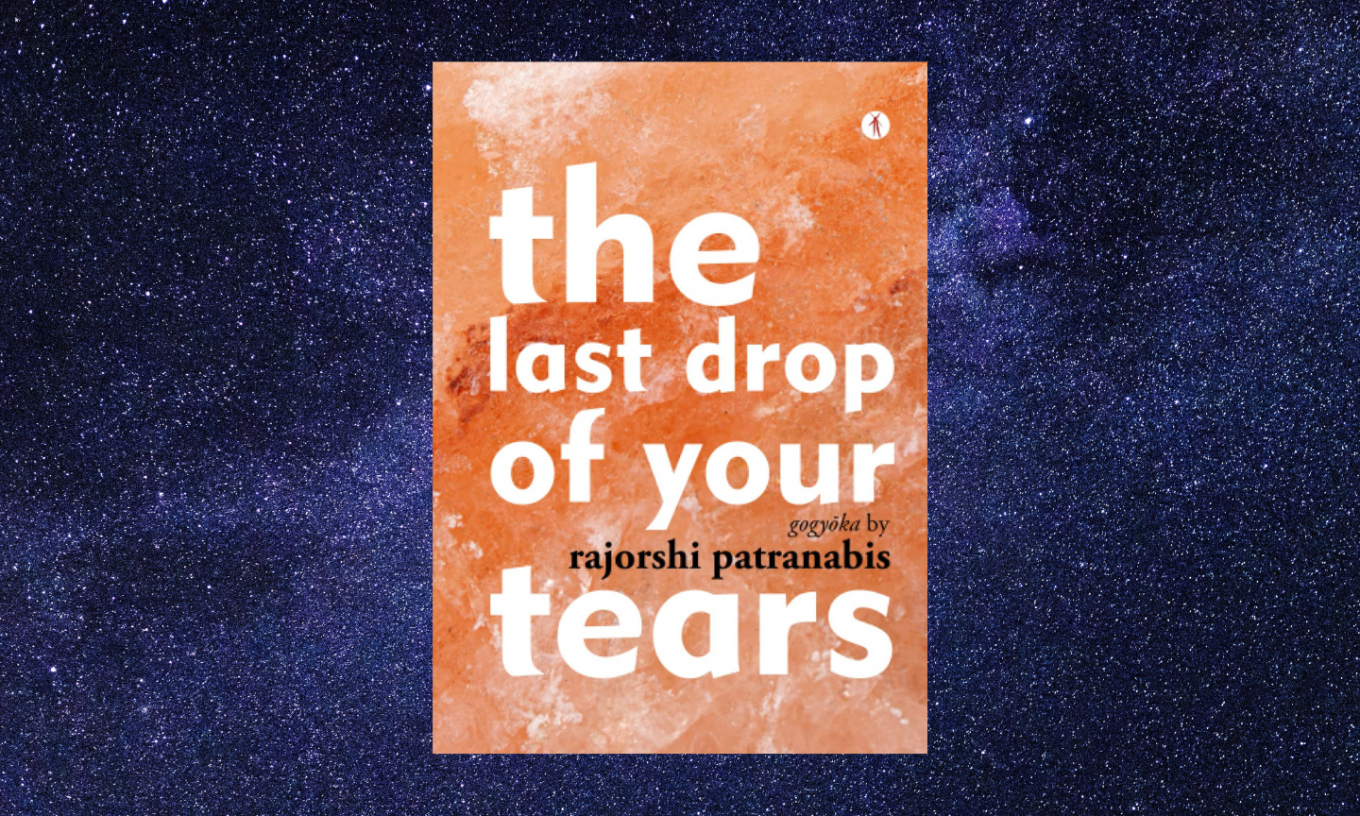Tears, and the Intersection of the Horizontal and the Vertical
If we were to imagine that human life is akin to embarking on a journey, then there are two parallel paths that broadly define our existentialism perhaps- the horizontal and the vertical.
In order to deconstruct and demystify this core – the horizontal path is the journey that we are on from birth to death – a chronological marker of sorts, or the historical metric of our linear time. As a result, your horizontal trajectory or graph is what defines your outer reality – the things that you do, your accomplishments, profession, family, friends, material possessions, surroundings, the way you are perceived by society, amongst other things. In other words, the outward projections of the mosaic of your life, mapping a predictable linearity of time.
The vertical path, on the other hand, is all about an internal sojourn – hinged on your presence of mind, awareness, inner compass, and the quality of your being. There is an immeasurable depth to this that cannot be weighed or evaluated by any metric system, and this graph can in many ways be associated with your spiritual path, the texture of your inner life, the fabric of your psychological realms, etc. Your inner landscape constitutes your thoughts, your belief systems, values, emotions, energy field, and subconscious, or even unconscious patterns.
The staggering beauty of human life dictates that we are always tiptoeing on this tricky tightrope – balancing our horizontal path along with that of the vertical. As a result, the need to nurture our inner awareness gets pushed back.
The Last Drop of Your Tears, perhaps the world’s first-ever Gogyohka collection by Rajorshi Patranabis represents to me the work of a poet who has taken the quiet time out and surrendered to the calling of the vertical trajectory. Placing in front of the deity of the Gogyohka, a sacrosanct offering of an enhanced level of awareness in a consciousness that harks on subterranean intuitiveness and feels like pure sadhana. Perhaps the poems find a deeper source in the fact that Rajorshi is a practicing Wiccan.
Poetic forms often constitute the crucial backbone of a poet’s work, and the Gogyohka- a five-line poetic format developed by Enta Kusakabe in Japan literally translates to “five-line poem”. Being initiated into Rajorshi’s previous work and his stylisation, it becomes apparent that the poet has an eye for Japanese forms of poetry, as is apparent in his various experiments with styles such as the Haiku, Haibun, Gogyoshi and now, the Gogyohka.
The agonizing ecstasy of love, sets the tone for a heart-wrenching profundity in the poems that often makes the reader untangle their own myths, while swimming through their own realities.
Rajorshi uses vulnerability to probe and lift the cerulean veils of the sky of our hearts. His “polytheistic nightmares” make the reader want to ask of themselves uncomfortable questions. The poet talks about cleaning “your muddy existence” and this then is a subtle nudge to travel within one’s own consciousness.
“smelt your lips
bit your dreams
polytheistic nightmares
last bit of abysmal cleaning
your muddy existence”
(Page 13)
The mysteries of the throbbing heart are multitudinous and manifold, and the rhythm can go awry when the inner eye must adjust to an undesirable sight – “rumoured storylines.” “The storyline” reference here could mean a real-life narrative unfolding, or the social media feed that often colours much of our perspectives. But in the end, the poem reiterates the windows that we must carve out for ourselves in our consciousness and our emphasis on the journey to “mystical realms.”
“weird rhythm
uncanny tune
august notes crackle
rumoured storylines wink
of mystical realms”
(Page 26)
Rajorshi takes the theme of death and explores it with crackling intensity. Though when it comes to matters of the heart, the lover dies a thousand deaths. And yet the soul’s thirst gets rekindled every time the flames arise to claim the high-domed ceilings and the dizzying minarets of rapture. Here the poet talks about the crooked, twisted smile of ironies and the lamentations that bring to the mind’s eye the visceral vision of a “grave” that has been dug sooner than its time, thwarting “dreams of togetherness”.
“drooled dreams of togetherness
your tears of smelting aroma
my ironies smile
aged gracefully to die in your eyes
my grave laments”.
(Page 35)
The Gogyohka in The Last Drop of Your Tears straddles many diverse, shimmering worlds simultaneously, and yet within this genesis lies a deep, mediative need to travel within. To decode the subterranean – what lies beneath the beguiling topsoil – and to piece together the disjointed broken glass fragments of the grand mosaic through the lenses of the acutely personal.
The Last Drop of Your Tears represents the heady, besotted eyes of the lover who persistently drinks the wine of love, but only to be drenched by it and feel its swirl more perceptively. Never to be inebriated by its full-bodied aroma or drown in its gigantic tidal waves. As Rumi would say, “Love comes on strong, consuming herself, unabashed.”
It is often said that the phrase, “less is more” first appeared in Robert Browning’s Andrea del Sarto in 1855 and was later popularized by the German architect Ludwig Miles van der Rohe at American architecture schools. Having been acquainted with Rajorshi’s work over the years, I feel, “less is more” forms the heart of his writing philosophy, wherein he strips away the extraneous and lets the metaphorical “silent waterfalls” speak.
“silent waterfall
strums string waltz
dusks of sandstorm
my song stood drenched
Stripped”
(Page 55)
While the brewing of the Gogyohka in The Last Drop of Your Tears might have festered in the wound of the heart, Rajorshi takes this wound, the blood, and the maggots, and morphs them into a love song that traverses the cosmos.
The cover design by Bitan Chakraborty is something art lovers will find pleasing. Published by the New Delhi-based Hawakal Publishers, the book priced at an affordable Rs 350 is a good buy for poetry lovers.
The “monochromatic land of Abyssinia” that the poet talks about is not an exotic, faraway land outside of you, away from you. It is the sacred, intersectional sanctuary somewhere between the horizontal and the vertical, where you can put down your existential crosses when they become too heavy to bear, and rest awhile. As the monsoons arrive in full throttle, turning the sand dunes of your vertical path into a meadow of red-beaked, green-feathered parrots.
***
*Footnotes:
Sadhana- Worship
***
Bio of Poet:
Rajorshi Patranabis is a multilingual poet, editor, translator, and reviewer dabbling in
different forms of poetry. A food consultant by profession and a Wiccan by philosophy, he
has eight collections of poetry (seven in English and one in Bengali) and two collections of
translations. He is credited for the first-ever collection of Gogyohka titled The Last Drop of Your Tears, published by Hawakal Prokashona





